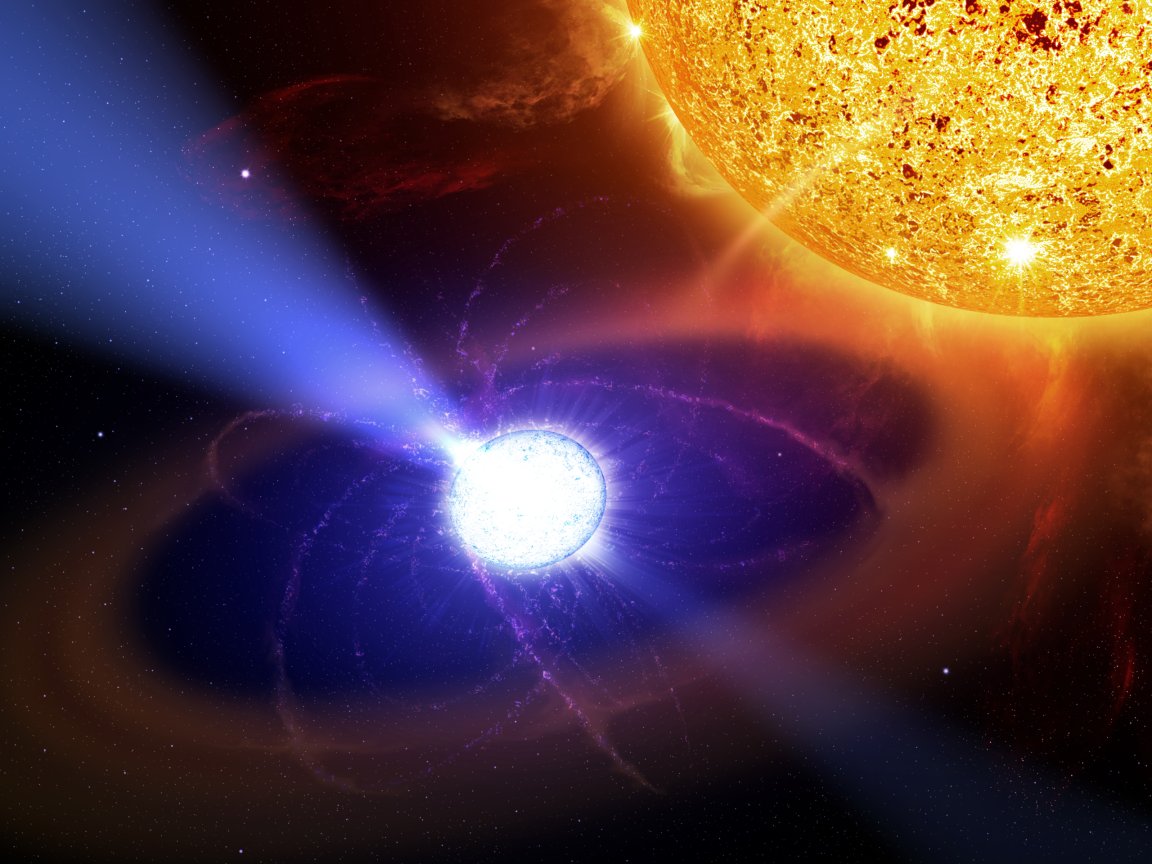
Know Your Nova
Countries like Korea, China, and Japan were well ahead of most when it came to astronomy. Artifacts have been found in Korea that demonstrate interest in the constellations dating back to the Bronze age, and a number of instruments and historical records have been discovered that are from the Three Kingdoms period (220 AD to 280 AD) and earlier.
Accounts from almost 600 years ago describe how a group of Korean astrologers spotted a new star in the night sky that faded from view after just 14 days. Modern scientists have since determined that they were seeing the explosion of a nova — an event that occurs after a star like our Sun is cannibalized by a white dwarf.
Over a period of 100,000 years, the white dwarf builds up a layer of hydrogen it steals from the star, and when this hydrogen reaches a critical temperature and ignites, the resulting burst of light causes the star to appear much brighter than normal for a period of time that can range from a few days to several months.
Now, researchers believe they’ve finally found the binary star system that caused the event six centuries ago.

A team comprised of Michael Shara, a curator from the American Museum of Natural History’s Department of Astrophysics; Richard Stephenson, an expert on ancient Asian astronomical records from Durham University; and John Bode, an astrophysicist at Liverpool John Moores University, has been working for years to find the exact location of the nova.
After expanding the area they were searching, the group found the ejected shell of the nova spotted by the Korean astrologers in 1437. This discovery was confirmed by a photographic plate that was produced in 1923 at the Harvard Observatory Station in Peru.
“With this plate, we could figure out how much the star has moved in the century since the photo was taken,” Shara, the study’s lead author, explained in a press release. “Then we traced it back six centuries, and bingo, there it was, right at the center of our shell. That’s the clock. That’s what convinced us that it had to be right.”
What Goes Around Comes Around
This research does more than just shed light on a centuries’ old observation. It also tells us some important information about nova in general: that they operate on a cycle after erupting, fading from view before returning to their earlier prominence.
When this system was observed by Korean astrologers in 1437, it was a nova, but it is now a dwarf nova. Previously, these were thought to be separate entities, but it now seems that a nova might cycle through several states after an eruption, eventually becoming a nova once again and restarting the process.
“In the same way that an egg, a caterpillar, a pupa, and a butterfly are all life stages of the same organism, we now have strong support for the idea that these binaries are all the same thing seen in different phases of their lives,” said Shara.

Unfortunately, the biggest hurdle to further increasing our knowledge of these systems isn’t an easy one to overcome: time.
“The real challenge in understanding the evolution of these systems is that unlike watching the egg transform into the eventual butterfly, which can happen in just a month, the lifecycle of a nova is hundreds of thousands of years,” noted Shara. “We simply haven’t been around long enough to see a single complete cycle.”
Still, the team’s discovery is remarkable as it marks a new achievement in the world of astronomy, according to Shara: “This is the first nova that’s ever been recovered with certainty based on the Chinese, Korean, and Japanese records of almost 2,500 years.” Individuals may not live long enough to observe these celestial cycles, but thanks to written records, humanity can experience and learn from them nonetheless.